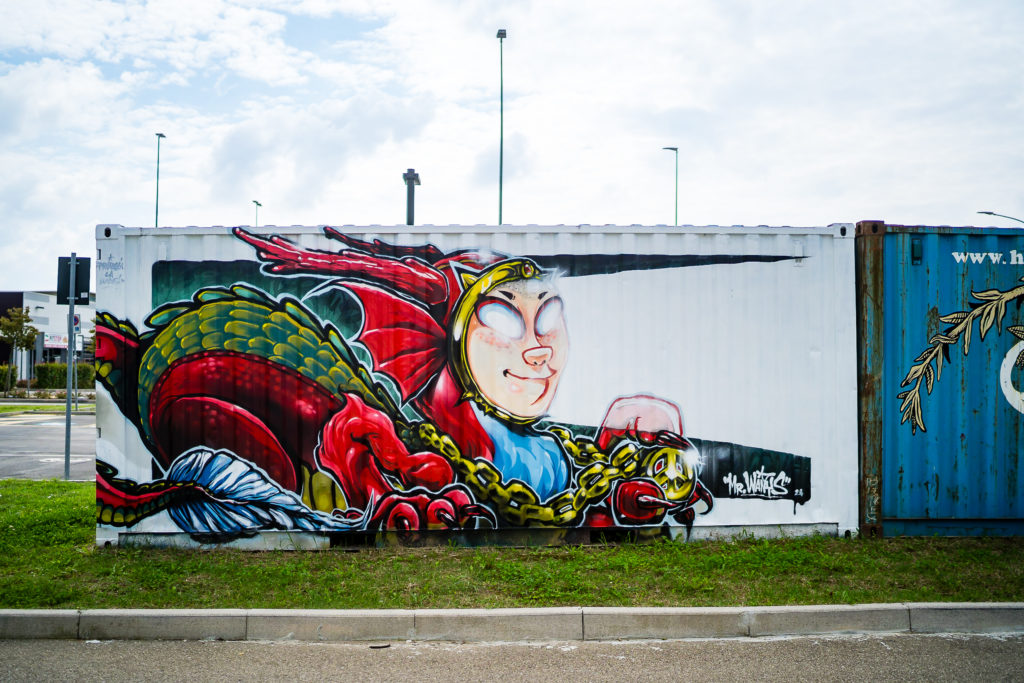


We’re about to dive into the vibrant world of one of the most dynamic and influential artists on the Italian scene: Andrea Sergio, better known as **Mr. Wany**.
Born in Brindisi in 1978, Mr. Wany began his artistic journey at a young age, painting his first graffiti at just 12 years old. Since then, his work has adorned the walls of many Italian cities, establishing him as one of the country’s most iconic graffiti artists. After graduating from the Liceo Artistico and honing his skills at the International School of Comics in Rome, Mr. Wany moved to Bologna in 2000. There, he embarked on a brilliant career as Art Director for Dynit, a leading publisher of Japanese anime and manga, expanding his talents into set design, comics, illustration, advertising, and design.
For over thirty years, Mr. Wany has been a cornerstone of Italian Hip Hop culture and a globally recognized figure in style writing. He has organized “Amazing Day,” Italy’s longest-running Hip Hop festival, and collaborated with international brands like Nike, Adidas, Coca-Cola, and Casio. In 2007, he founded his atelier, “The Amazing Art,” in Milan, where he creates large-scale murals and canvas works. His achievements include an invitation to exhibit at the Venice Biennale and participation in numerous international exhibitions. In January 2025, his first monograph will be published, celebrating 35 years of his career in street culture.
One of the recurring characters in his work is **Hiroshi Kabuki**, a figure born from his love of Japanese anime. Hiroshi represents the creative heart of Mr. Wany, embodying various themes and ideas, as you’ll see in the two pieces on display here.
On the first side, visible from the road, we find the piece **”Hiroshi Kabuki.”** Here, the character plays cheerfully with a plane and a truck, almost like a giant orchestrating the flow of goods passing through Bologna’s Interporto, a logistical hub that’s constantly in motion, active 24/7. The simple color choices make Hiroshi stand out from a distance, symbolizing the energy and rhythm that drive this place.
On the opposite side is **”Protect the Light,”** a work of dreamlike power and allure. Here, Hiroshi Kabuki transforms into a figure reminiscent of a dragon, with a smiling face from which a beam of light radiates. Around his neck, he wears a necklace with a peace symbol, suggesting that this light represents the purest vision of a cultured human being. The artist urges us to safeguard this light, as culture illuminates our lives and gives meaning to our existence. Hiroshi becomes the guardian of culture and peace, a symbol of hope and protection.
Through these two works, Mr. Wany offers us a reflection on everyday life and the beauty of existence, turning the walls of Interporto into a visual dialogue between art, labor, and universal values.